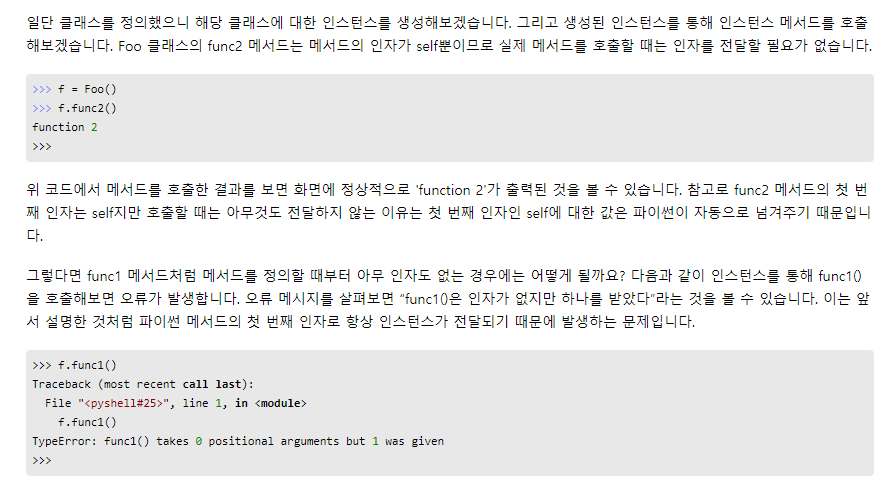
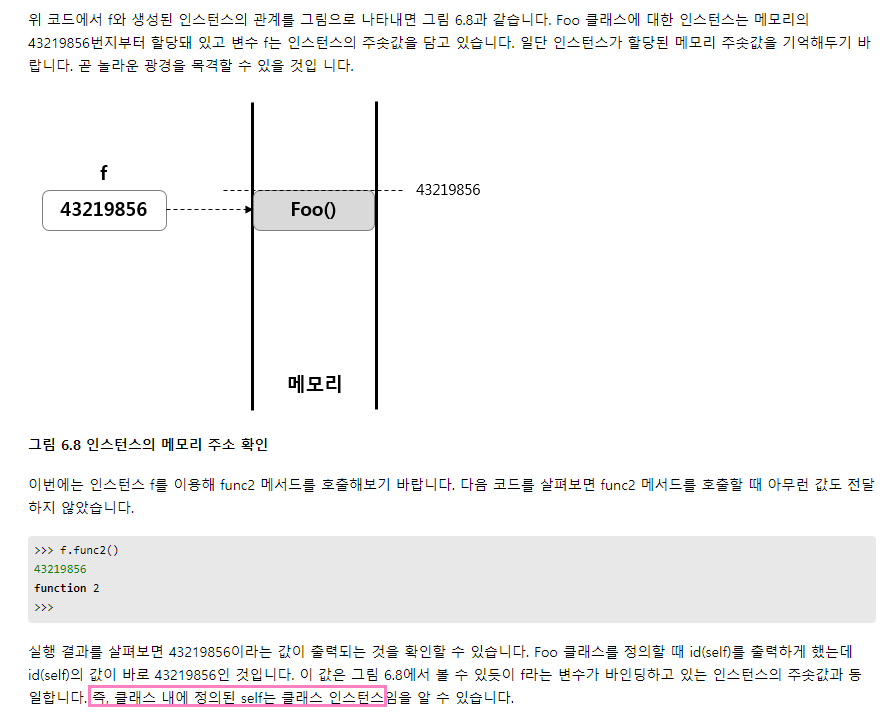

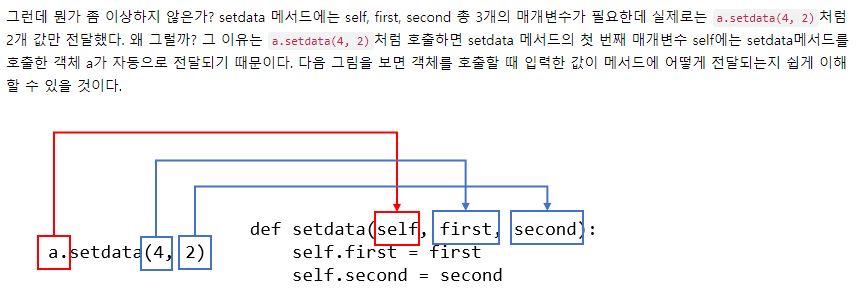
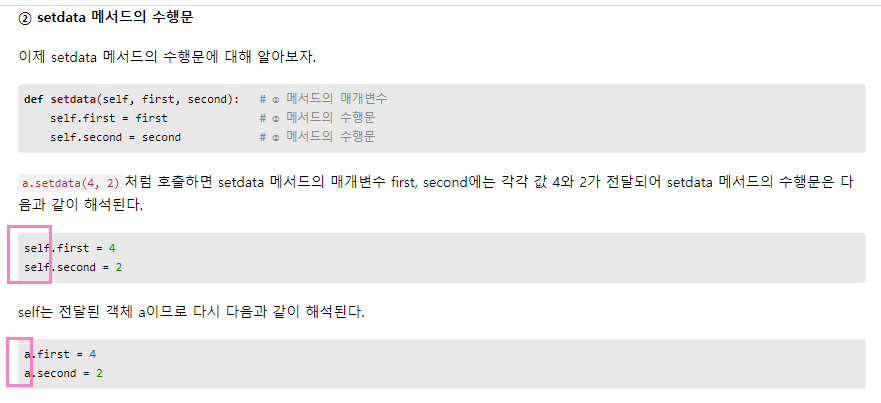
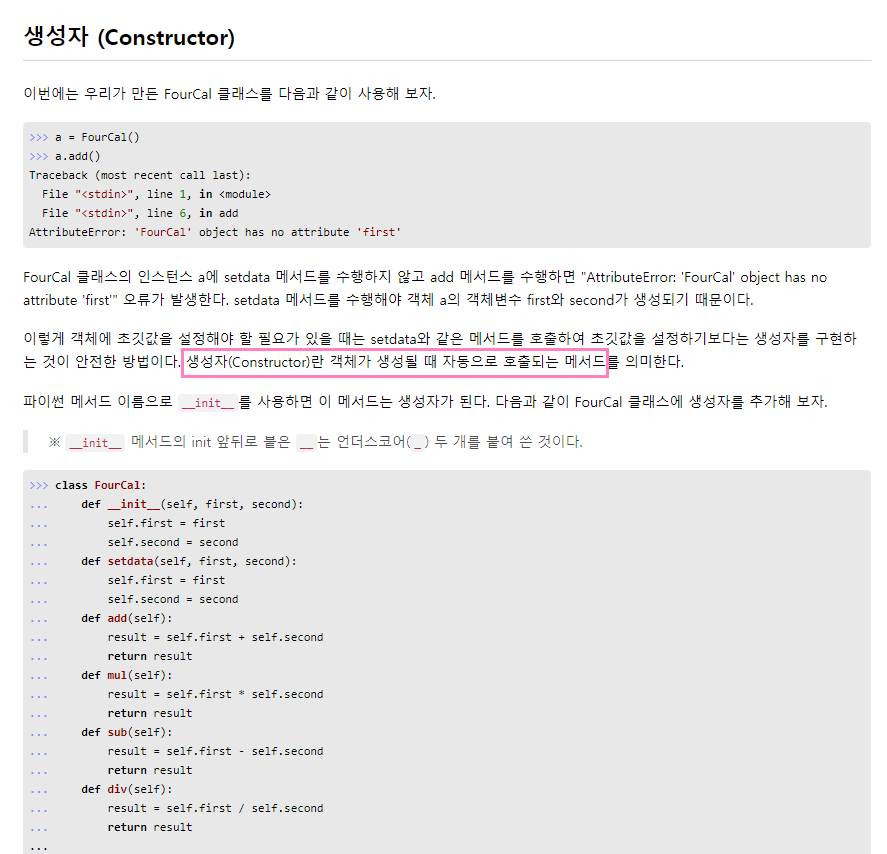
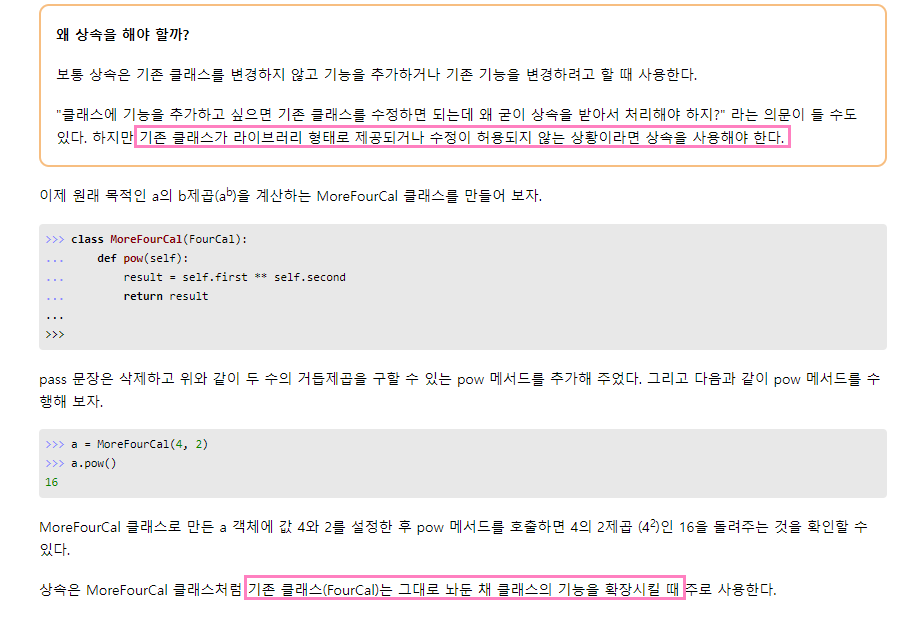
클래스 메소드와 클래스 인스턴스 메소드
class Foo:
def func1():
print("function 1")
def func2(self):
print(f"function 2 - id {id(self)}")
print("function 2")
print(f"Foo 클래스의 id: {id(Foo())}")
a = Foo()
print(f"Foo 클래스의 인스턴스 a의 id: {id(a)}")
## 클래스로 함수 호출
Foo.func1()
# Foo.func2()
"""
Traceback (most recent call last):
File "C:/jek_study/practice_algorithm/test.py", line 15, in <module>
Foo.func2()
TypeError: func2() missing 1 required positional argument: 'self'
"""
Foo.func2(a)
print("-"*10)
## 클래스 인스턴스로 함수 호출
# a.func1()
"""
Traceback (most recent call last):
File "C:/jek_study/practice_algorithm/test.py", line 31, in <module>
a.func1()
TypeError: func1() takes 0 positional arguments but 1 was given
"""
a.func2()위의 실행결과:
C:\Users\jek\AppData\Local\Programs\Python\Python37\python.exe C:/jek_study/practice_algorithm/test.py
Foo 클래스의 id: 2949544404296
Foo 클래스의 인스턴스 a의 id: 2949544404424
function 1
function 2 - id 2949544404424
function 2
----------
function 2 - id 2949544404424
function 2
Process finished with exit code 0Reference
- self 이해하기 (https://wikidocs.net/1742)
- 클래스 (https://wikidocs.net/28)
- 디스크립터 사용법 안내서 (https://docs.python.org/ko/3/howto/descriptor.html)
